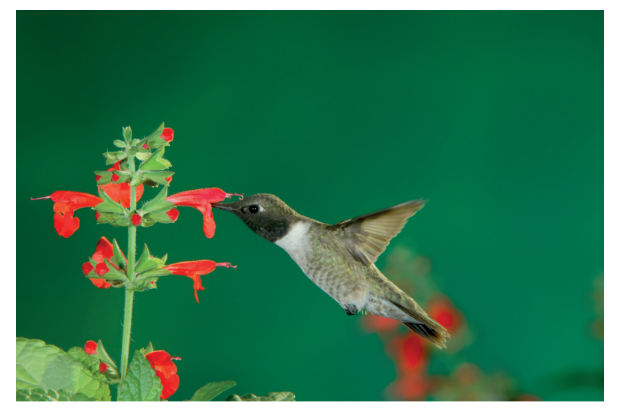Question
The three-toed sloth, Bradypus variegatus, lives in tree tops where it feeds on leaves. It also feeds on algae and fungi which live in its fur.
In which trophic group should the three-toed sloth be classified?
A. Autotroph
B. Consumer
C. Detritivore
D. Saprotroph
▶️Answer/Explanation
Markscheme
B
Question
Which processes occur in an ecosystem?
I. Biomass increases in each successive trophic level.
II. Inorganic nutrients are recycled.
III. Chemical energy is stored in carbon compounds.
A. I and II only
B. I and III only
C. II and III only
D. I, II and III
▶️Answer/Explanation
Markscheme
C
Question
A hummingbird is shown visiting a large flower.

What makes this a mutualistic relationship?
A. The bird feeds on nectar and transfers pollen to the stamen of a flower of the same species.
B. The bird obtains nutrients and the plant is assisted with pollination for sexual reproduction.
C. The bird requires pollen as a protein source and, while obtaining this, disperses seeds for the plant.
D. The bird transfers pollen to the stigma of flowers of a different species while feeding.
Answer/Explanation
Ans:B
Question
Hummingbirds eat flower nectar and small insects. To which nutritional group do they belong?
Autotrophs
Consumers
Detritivores
Saprotrophs
Answer/Explanation
Ans: B